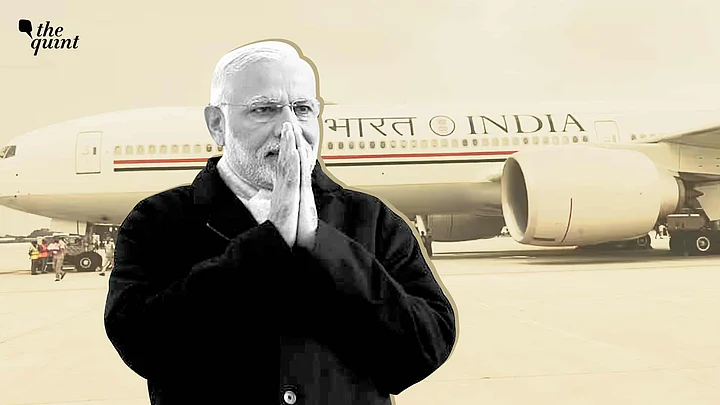(This is the third in a three-part series of columns that assesses and analyses the changes that India has witnessed as a society, polity and economy since 26 May 2014, when Narendra Modi first took oath as the Prime Minister. The authors argue that “mindset” changes in India are more profound and will impact the future of India in a more powerful way than the persona and performance of Modi. Read the first and the second parts here.)
History is testimony to the fact that the subaltern always bide their time; and that time does invariably arrive. That time is sometimes marked as a relatively smooth transition, and often as a violent upheaval. For the most part, India since 1947 has seen more of the former than latter.
When Narendra Modi took oath as Prime Minister on 26 May 2014, the dominant narrative was about a “chai walah” from a humble background humiliating a crown prince in the electoral sweepstakes.
In the previous two columns, the authors have analysed three “mindset” changes during the Modi tenure that will irretrievably change the future of India:
Impatient aspirations
A blend of nationalism and Hindutva, and
A resurgence of identity assertion
In all this, if you take a historic look, it is hundreds of millions of Indians who escaped extreme poverty in the 21st century determined to transform their lives and livelihoods pitted against an old, established yet decaying elite that is keen to preserve status quo.
Out on the World Stage
This clash of will and ambitions has intensified and accelerated in the last one decade or so since Modi has been at the helm. Dalit assertion has skyrocketed; the political ascendancy of other backward castes has solidified; Hindutva is no longer an emotion that citizens conceal; and females no longer vote as per the diktats of the family patriarch.
When it comes to global affairs and geopolitics, India is the subaltern who is convinced her time has arrived and is no longer willing to accept the diktats of a group of rich and powerful nations that have controlled and gamed global institutions and narratives since the end of the Second World War.
To be sure, India has always pursued an “independent” foreign policy since the times of Jawaharlal Nehru. But that was usually posturing and rhetoric laced with claims to a moral high ground.
Frankly, not many took India very seriously. It was frequently punished for stepping out of the line. The authors recall the summer of 1998 when India officially went nuclear. The so-called G-7 nations came down upon India like a ton of bricks. Punitive sanctions were imposed.
The distance from 1998 to Operation Sindoor has been kind of transformational in every sense. While it did not get unequivocal support, it was also not openly rebuked.
Barring a few, not one major nation questioned the need for India to use its military to directly target terrorist camps and bases deep inside Pakistan.
There were the usual noises made about peace and the danger of two nuclear powers fighting it out in the Indian subcontinent. S Jaishankar is a manifestation of this “mindset” change.
When Russia invaded Ukraine in February 2022, the entire Western world blacklisted Russia and imposed punitive sanctions. Western leaders scolded India for continuing to buy oil at cheaper prices from Russia despite global sanctions.
Jaishankar used the podium in western capitals back then to politely and firmly tell the global elites that India will do what is in the interest of its 1.4 billion citizens, and not what global elites dictate. The Modi tenure has completely buried the era of India always bowing down before western powers.
Not Just 'Modi' Factor, Money Matters
It is also important to point out a simple fact often ignored. Modi is without any doubt perceived as a strong and forceful Indian leader in the global community. But the newfound respect, however grudging, for India is not just because Modi is popular and forceful.
It is because India is a $4.2 trillion economy with an annual defense budget that will soon cross $100 billion. The subaltern has arrived.
The fifth and last “mindset” change in the Modi tenure is linked to the previous four. The older generation of Indians still recall the days when they stood in queues for interminable hours to get a family “quota of ration”; and when they waited for five years after payment to get delivery of a Bajaj scooter and seven years to get a phone connection. For most Indians born in this century, such tales sound like fantasies. But that India of shortages and desperate livelihoods was real.
Thrift, prudence, and saving for the rainy days were lessons hammered into the brains of young Indians at every stage. Borrowing money, except for emergencies, was taboo.
All that started changing in the 1990s after economic liberalisation. Consumerism did replace thrift.
The process would have continued as more and more hitherto poor Indians joined the formal economy and conducted transactions like independent economic players.
But the game changer “mindset” reset was thanks to the Modi push for UPI. Thanks to the arrival and relentless rise of digital transactions, the India of pre 2014 looks so different from the contemporary one that it defies belief.
All leaders, especially those that dominate the polity for long periods of time, end up doing both good and bad. That is the nature of the beast. That is how history and historians will judge him.
But while they debate his tenure and leadership the way one debates Nehru today, there is little doubt that serious historians will pay more attention to these five “mindset” changes than just the personality of Modi.
(Yashwant Deshmukh and Sutanu Guru are political analysts with the CVoter Foundation. This is an opinion piece. The views expressed are the authors' own. The Quint neither endorses nor is responsible for them.)
